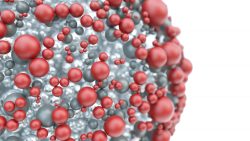 According to the CDC at least 5 million people living in the U.S. live with Alzheimer’s Disease and related dementias. As the population ages, experts believe this number will increase quite significantly. A new study of older adults has shown that how increasing physical activity and changing diet can reduce the risk of dementia related diseases even if the person already has a cognitive decline diagnosis.
According to the CDC at least 5 million people living in the U.S. live with Alzheimer’s Disease and related dementias. As the population ages, experts believe this number will increase quite significantly. A new study of older adults has shown that how increasing physical activity and changing diet can reduce the risk of dementia related diseases even if the person already has a cognitive decline diagnosis.
Dementia is a group of disorders that are characterized by difficulties in remembering, thinking and reasoning. Alzheimer’s is the most common type of cognitive decline. Even though scientists do not know the exact biological cause of Alzheimer’s, they do know that a variety of lifestyle factors does increase a person’s risk of developing dementia.
Lifestyle changes that affect this risk include alcohol consumption, smoking, physical activity and diet. One study has estimated that close to half of all cases of Alzheimer’s disease worldwide could have links to certain lifestyle factors.
A recent study led by The Australian National University in Canberra, conducted trials of a series of lifestyle interventions in people who were already experiencing cognitive decline. The goal was to see whether these changes might improve a person’s cognitive state and potentially reduce the risk of developing dementia.
The research team discovered that people who actively changed certain aspects of their lifestyle choices, were able to experience significant improvements in their cognition. This suggests that by making certain lifestyle changes, the course of cognitive decline could be altered and could also reduce a person’s risk of developing Alzheimer’s.
The study involved 119 participants aged 65 or older who had either subjective cognitive decline (SCD) which is the self reported experience of memory loss of confusion, or had mild cognitive impairment (MCI) which is a clinically diagnosed form of cognitive decline. Medical professionals consider both forms of cognitive decline as early onset symptoms of dementia, although not everyone with MCI or SCD will develop dementia.
The study which is a part of the Body, Brain, Life for Cognitive Decline trial, set out to determine whether activity levels and diet can reduce the risk of dementia in people diagnosed with cognitive decline.
The participants were split roughly into two groups. Over an eight week period, the active control group completed online modules on the risk of dementia including information on dementia, lifestyle factors, physical diet, Mediterranean diet, and cognitive relations. These participants were given the instructions to blend this information into their own lifestyles.
The intervention group of participants received the identical online information in addition to active components to help with implementing their information into their lifestyles. These included an exercise physiologist session, dietitian sessions, and online brain training.
At the end of the study, the intervention group’s cognition levels were significantly higher than the other group. Over the six months of follow-up, researchers noted that these participants were able to improve their lifestyle choices and had higher cognition scores. They measured this using a variety of tools including the Alzheimer’s Disease Assessment Scale Cognitive Subscale.
The team also assessed exposure to lifestyle risk factors for developing Alzheimer’s and showed that the intervention group was also significantly lower at the 3 month follow-up. However, at the six month follow-up this was not the case. This suggests that people need to maintain their diet and activity improvements to see continued benefits.
The study shows that people who are already experiencing cognitive declines, can reduce their risk for developing dementia later in life. With the right interventions, they may retain sufficient neuroplasticity of their brain to bounce back from decline. The fact that people can achieve this by adapting cost effective and relatively simple lifestyle changes, is very promising.
The research team notes that a follow-up trial with more participants than the original 119 and over a longer period will be important to confirm their findings and additionally demonstrate sustained cognitive improvements. They also note that participants who did not maintain a reduced risk of Alzheimer’s by the end of the study, suggests that some people may require “booster” sessions to ensure continuation of benefits.
To view the original scientific study click below
Lifestyle Risk Factors and Cognitive Outcomes from the Multidomain Dementia Risk Reduction Randomized Controlled Trial, Body Brain Life for Cognitive Decline (BBL?CD)
 A new study has shown that people who are cheerful and feel enthusiastic or what is known as the “positive effect”, are not likely to experience decline in memory with aging. This study adds to a increasing body of research that shows the role a positive outlook has on aging.
A new study has shown that people who are cheerful and feel enthusiastic or what is known as the “positive effect”, are not likely to experience decline in memory with aging. This study adds to a increasing body of research that shows the role a positive outlook has on aging.


 New research has identified a mechanism that appears to be able to prevent hair loss. A group of researchers in Helsinki and Cologne Germany have demonstrated that a protein known as Rictor holds a important role in the process.
New research has identified a mechanism that appears to be able to prevent hair loss. A group of researchers in Helsinki and Cologne Germany have demonstrated that a protein known as Rictor holds a important role in the process.  A research team at the Icahn School of Medicine at Mt. Sinai have identified certain sub-populations of brain cells located in the prefrontal cortex that are needed for normal sociability in adults and are also profoundly vulnerable to social isolation in juvenile mice. The prefrontal cortex in the brain is a key part of the brain that regulates social behavior. The study conducted on mice shows long lasting effects and also directs the way to potential treatments.
A research team at the Icahn School of Medicine at Mt. Sinai have identified certain sub-populations of brain cells located in the prefrontal cortex that are needed for normal sociability in adults and are also profoundly vulnerable to social isolation in juvenile mice. The prefrontal cortex in the brain is a key part of the brain that regulates social behavior. The study conducted on mice shows long lasting effects and also directs the way to potential treatments. Nano-particles can be useful and even valuable in a variety of products, however according to a recent study they can also damage our cells. Researchers are now concerned about the effects of lifelong exposures to this human organism.
Nano-particles can be useful and even valuable in a variety of products, however according to a recent study they can also damage our cells. Researchers are now concerned about the effects of lifelong exposures to this human organism. The death of neurons whether in the eye or in the brain can result in a variety of human neurodegenerative diseases that range from blindness to Parkinson’s disease. Treatments currently available for these type of disorders only slow the progression of the illness. This is because once a neuron dies it cannot be replaced.
The death of neurons whether in the eye or in the brain can result in a variety of human neurodegenerative diseases that range from blindness to Parkinson’s disease. Treatments currently available for these type of disorders only slow the progression of the illness. This is because once a neuron dies it cannot be replaced. Research from the Centre for Nutrition, Exercise and Metabolism at the University of Bath (UK) looked at the combined effects of caffeine and disrupted sleep on our metabolism and found surprising results. They found that a strong, black cup of coffee to wake you up following a bad night’s sleep might impair control of blood sugar levels.
Research from the Centre for Nutrition, Exercise and Metabolism at the University of Bath (UK) looked at the combined effects of caffeine and disrupted sleep on our metabolism and found surprising results. They found that a strong, black cup of coffee to wake you up following a bad night’s sleep might impair control of blood sugar levels. A new study conducted on mice has suggested that a diet that is high in the sugar fructose exacerbates inflammatory bowel disease (IBD). It appears that changes in gut bacteria mediate the effect.
A new study conducted on mice has suggested that a diet that is high in the sugar fructose exacerbates inflammatory bowel disease (IBD). It appears that changes in gut bacteria mediate the effect. According to the CDC at least 5 million people living in the U.S. live with Alzheimer’s Disease and related dementias. As the population ages, experts believe this number will increase quite significantly. A new study of older adults has shown that how increasing physical activity and changing diet can reduce the risk of dementia related diseases even if the person already has a cognitive decline diagnosis.
According to the CDC at least 5 million people living in the U.S. live with Alzheimer’s Disease and related dementias. As the population ages, experts believe this number will increase quite significantly. A new study of older adults has shown that how increasing physical activity and changing diet can reduce the risk of dementia related diseases even if the person already has a cognitive decline diagnosis. Researchers at the Karolinska Institutet have recently revealed new knowledge on the cellular makeup and growth of teeth that can expedite new developments in regenerative dentistry and treatments for tooth sensitivity. Regenerative dentistry is a biological therapy for damaged teeth.
Researchers at the Karolinska Institutet have recently revealed new knowledge on the cellular makeup and growth of teeth that can expedite new developments in regenerative dentistry and treatments for tooth sensitivity. Regenerative dentistry is a biological therapy for damaged teeth. A study from the Washington University School of Medicine has shown that a molecule which is produced by the immune system acts on the brains of mice to change behavior. The evidence illuminates a surprising body-mind connection.
A study from the Washington University School of Medicine has shown that a molecule which is produced by the immune system acts on the brains of mice to change behavior. The evidence illuminates a surprising body-mind connection.